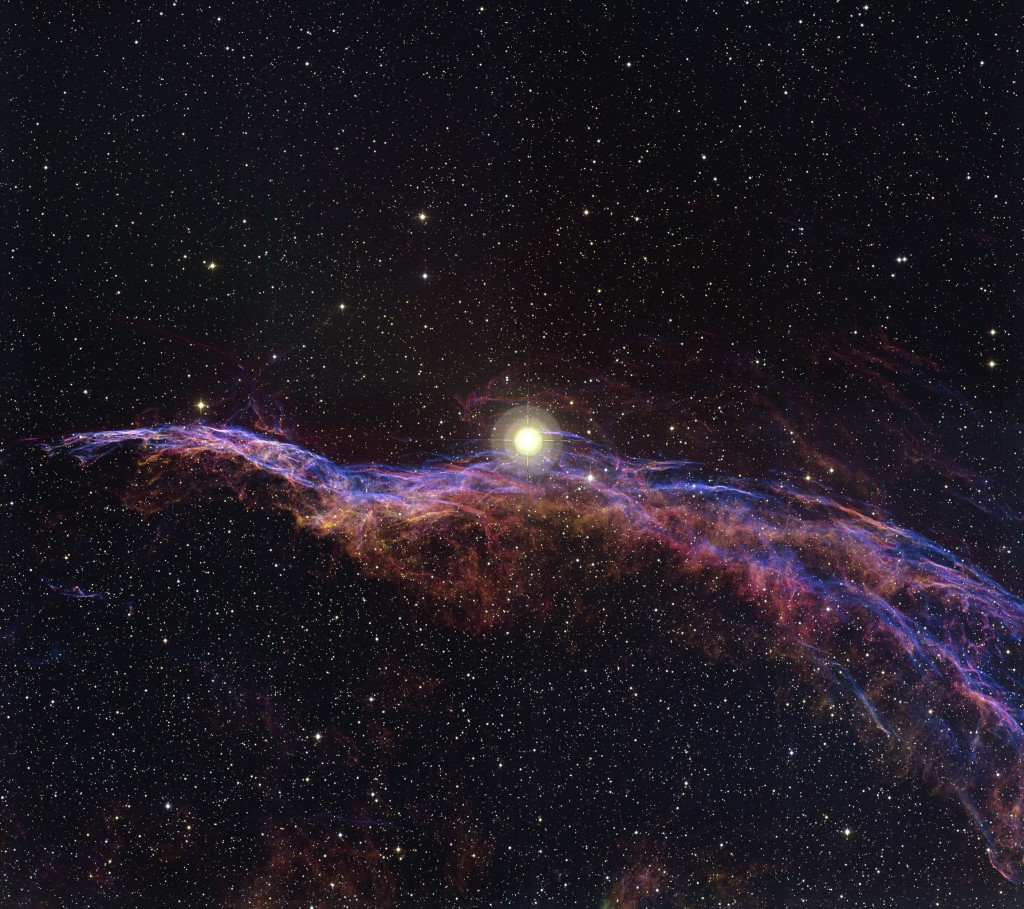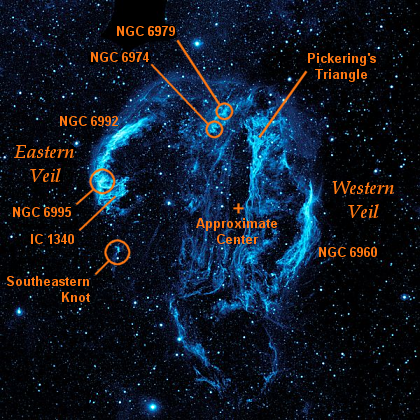How Do We Know It: Supernova Remnant Age
- By Maggie Masetti
- November 20, 2015
- Comments Off on How Do We Know It: Supernova Remnant Age
I get a lot of inspiration for blog-topics from questions I get via email. Often they don’t have easy or straightforward answers (see this question on how many stars there are in the Milky Way). I was recently asked how we arrived at an age of 8000 years for the Veil Nebula. If we don’t actually witness the star’s explosion (like we did with, say, SN1987A), how do we know how long ago it happened? I thought the answer ended up being pretty interesting because it’s a great example of how it works when our tools improve – better tools equal more refined answers. And sometimes the answers radically change as our understanding improves.

The Veil Nebula. Credit: T. A. Rector/University of Alaska Anchorage and WIYN/NOAO/AURA/NSF Read more.
But let’s back up a bit and talk about how we calculate the age of something like the Veil Nebula. There are indeed different types of nebulae; the Veil is the type that results from a massive star ending its life in a huge explosion. The remaining shell of dust and gas is what we call a supernova remnant (SNR). And this is what the Veil is. Actually it’s the visible light part of what is known as the Cygnus Loop.

Recent GALEX image of the Cygnus Loop in ultraviolet light, with labels added to point out well known features: The Western Veil (NGC 6960) The Eastern Veil (NGC 6992, NGC 6995, IC 1340) NGC 6974 and NGC 6979 along the northern edge Pickering’s Triangle The Southestern Knot, a prominent X-ray feature. Original image credit: NASA/JPL-Caltech
The age, expansion rate of a SNR, and its size are all related mathematically. If you know two of these things, you can figure out the third.
In the case of the Veil, we want to know its age. Its age is equal to the distance the nebula has expanded divided by the rate at which it’s expanding.
One way we can figure out the rate at which its expanding is by observing the nebula over time and seeing how much it has expanded in that amount of time. Of course this isn’t always easy to do. You’ll often see the Crab Nebula used as the example when students learn how to do this calculation. (This college-level page goes through the exercise, as does this middle/high school pdf.) This is because the Crab is well-studied, and there are many images and observations of it; in particular there are images from it from 1956 and 1999 and it has noticeably expanded since then.
To measure the size the SNR, you need to know how far away it is. If you know its distance from earth, then you can use trigonometry to calculate its radius. (Here’s a pdf that goes through the calculation.) Note that the reverse calculation can also be done. In the aforementioned case of SN1987A, we saw it happen, knew how much it had expanded since the inital explosion, and could measure its size – with some trig, we were able to derive its distance!
But back to the case of the Veil Nebula. We had previously estimated its distance from Earth as about 2500 light years away. But recent observations from the Hubble and FUSE missions gave us a more accurate distance measurement. Now we estimate its distance from us as somewhere around 1500 light years. This in turn puts our calculation of the distance it has expanded at a lower number (90 light years instead of 150), and thus dropped the estimated age of the nebula from 20,000 years to somewhere between 5000-8000 years old!
And so this is how being able to make more advanced tools to probe the cosmos can really make a big difference in our understanding of them!
Read more:
- Imagine the Universe: Supernova Remnants
- Wikipedia on the Cygnus Loop’s Distance
- Determination of the Distance to the Crab Nebula (pdf)
- The Crab Nebula Age Calculation (college level)
- Middle/High School level activity on Crab Nebula Age Calculation (page 15 of pdf)
- Piercing the Veil: FUSE Observes a Star Behind the Cygnus Loop Supernova Remnant
- Science Daily: FUSE Pierces The Veil: Satellite Pins Down Distance To Important Exploded Star
- 2015 Hubble Veil Observations



